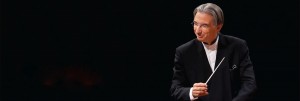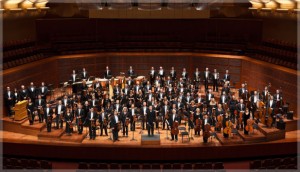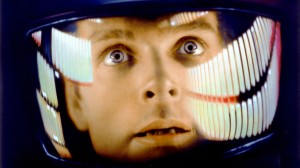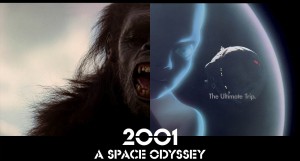JOURNEY BEYOND THE STARS
Stanley Kubrick’s decision to use the first section of Richard Strauss’s exquisite Also Sprach Zarathustra, Opus 30 (1896) to underscore the opening sequence of his classic 1968 film 2001: A Space Odyssey may have been a master stroke; but the average moviegoer was, and still is, unfamiliar with the entire symphonic poem. Could Thus Spake Zarathustra (or “Spoke” depending on the translation) suffer the same ignoble fate as the William Tell Overture, which is still known to a generation of Baby Boomers as the title music of The Lone Ranger television show of the 1950s? Not to worry. Strauss’s self-selected favorite symphonic composition offers many more treasures than its instantly recognizable opening fanfare, especially in the hands of maestro Michael Tilson Thomas and the San Francisco Symphony.
Thomas, a multi-faceted and intelligent programmer, presented an evening with its feet firmly planted on either side of the Atlantic, dividing the program into two sections: the first American; the second–music from 2001–European.
Lukas Foss’s oddly entitled, wordless choral composition, ”’¦then the rocks on the mountain began to shout – Charles Ives,” opened the evening with the singers employing vocalize instead of lyrics. Dissonant and undulating, it evoked images of a river making its way to sea, intermittently encountering obstacles in its path. Sonorous and almost cinematic at times, it was performed by Ragnar Bohlin’s world-class San Francisco Symphony Chorus. Later, the corresponding European a cappella piece was György Ligeti’s Lux aeterna; with its soft power and enigmatic quality, it was a fascinating and strikingly effective choice for the “voice” of the monolith in 2001, and flawlessly rendered here by the Symphony Chorus.
Closing the first half of the program was Charles Ives’ timeless and moving triptych, Three Places in New England, which Ives himself once described as “musical psychic photographs. “ Depicting three actual locations in Massachusetts and Connecticut, the first movement was “Saint Gaudens in Boston Common (Monument to Colonel Shaw and His Colored Regiment),” a moving ode, ripe with deep melancholy and the occasional Civil War musical reference.
The second movement, “Putnam Camp, Redding, Connecticut,” is a conflation of two earlier pieces, “Overture 1776” and “Country Band March,” burst with the high energy and exuberance of musicians possessing a great deal more enthusiasm than skill, occasionally sounding very much like two overlapping ensembles simultaneously kicking up their heels on a high summer day.
“The Houstonic at Stockbridge,” the third movement, and the jewel in the crown, flowed over the audience in expansive waves, its rich harmonies made all the more powerful by the participation of the Symphony Chorus.
Opening the second, or European, half of the program, Johann Strauss, Jr.’s By the Beautiful Danube Waltz, Opus 314 (1867) sounded fresh and romantic, if a bit tame and old-fashioned as compared to the American pieces, despite the orchestra’s unadulterated and full-bodied rendering.
Closing-out the program was, of course, Strauss’s Also Sprach Zarathustra, which was conducted, and played, with extraordinary power and great freedom. To watch Maestro Thomas and his large ensemble breath as a single unit is to understand why this orchestra is considered one of the finest, if not the finest, on this planet’”or any planet, for that matter.
photos courtesy of SF Symphony and Metro-Goldwyn-Mayer
Music from 2001: A Space Odyssey
San Francisco Symphony
Michael Tilson Thomas, conductor
FOSS “. . . then the rocks on the mountain began to shout”’”Charles Ives
IVES Three Places in New England
J. STRAUSS, JR. By the Beautiful Blue Danube Waltz
LIGETI Lux aeterna
R. STRAUSS Also sprach Zarathustra
Davies Symphony Hall, 201 Van Ness Avenue
scheduled to end on September 28, 2014
for tickets, call 415-864-6000 or visit www.sfsymphony.org





